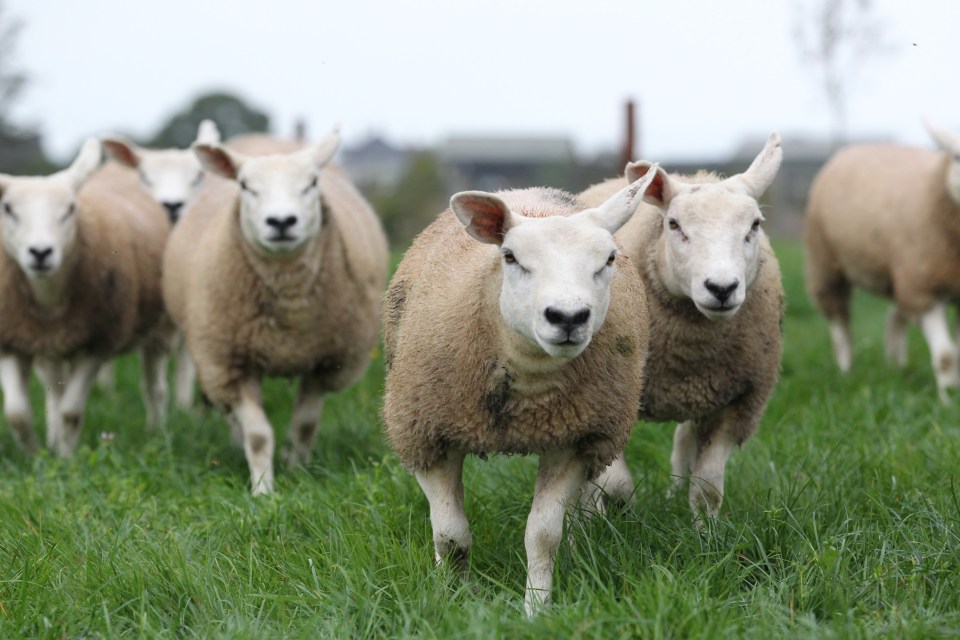
Enzootic (Chlamydophila) Abortion
A page about enzootic abortion in sheep describing cause, clinical signs, diagnosis and control.
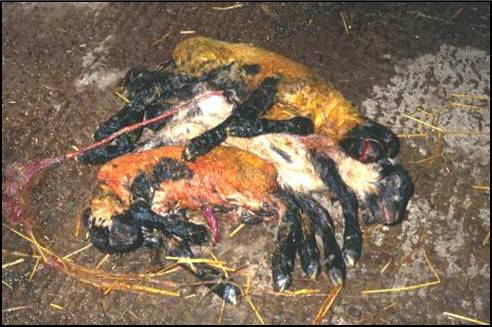
Introduction
Ovine enzootic abortion is caused by an organism called Chlamydophila abortus.
The main source of infection is infected sheep shedding at lambing time in birth fluids. This can happen from newly infected sheep or recovered carrier sheep that aborted during a previous pregnancy. If you encounter a sheep abortion episode it is important to establish a definitive diagnosis as there are quite a number of causal agents that contribute to the abortion syndrome.
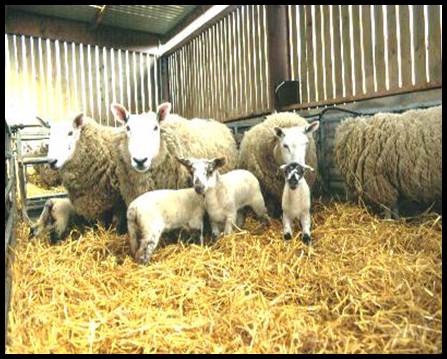
Aetiology
Enzootic abortion of ewes (EAE) is caused by a tiny organism known as Chlamydophila abortus. This microscopic organism causes infection mainly in ewes though transient infection of rams is also possible.
Epidemiology
The clinical consequences of infection are determined by the timing of infection, the immune resistance of the animal infected and the numbers of organisms taken in. Enzootic abortion is caused by infection during pregnancy with the Chlamydophila organism derived from infected birth fluids and placentas from recently or latently infected sheep. Infection with a small number of organisms in a sheep results in massive multiplication of the organism in the latter part of pregnancy resulting in shedding of millions of Chlamydophila organisms in the birth fluids and placenta of the infected sheep. It is important to realise that enzootic abortion is a sheep to sheep disease. However, mixing sheep prior to pregnancy will not result in control. This is because the main source of infection is infected birth fluids. When a non pregnant sheep (or indeed even a young lamb) becomes infected, they develop latency. This is a type of infection where the organism is taken in by mouth and colonises the lining of the uterus. At some point in mid pregnancy an unknown trigger causes the organism to become active. Once activated, the Chlamydophila multiply causing inflammation of the lining of the connection between the foetus and dam (placentitis). The damage to this connection renders the pregnancy non-viable and abortion is the result. Understanding latent infection therefore is key to disease control as it is important to realise that infection in one year most often results in abortion in the following year. The only exception to this may be in a split lambing flock where infection as a result of exposure to birth fluids from early lambers may infect mid-season lambing sheep during a time of susceptibility resulting in infection and abortion in the same year. This is exceptional however. Purchasing latently infected sheep is probably the most common source of initial infection in a flock. This often results in a small number abortions in the year after introduction with a storm (due to infection spread to other naive sheep within the flock) in the subsequent year.
Once a ewe has been infected, she becomes immune though is a carrier of the disease in subsequent years. Therefore she may shed organisms at subsequent lambings. The amount of shedding is highest in aborting sheep however.
The stage at which an infection is picked up during pregnancy will determine the outcome as there is a lag period between infection and onset of clinical signs.
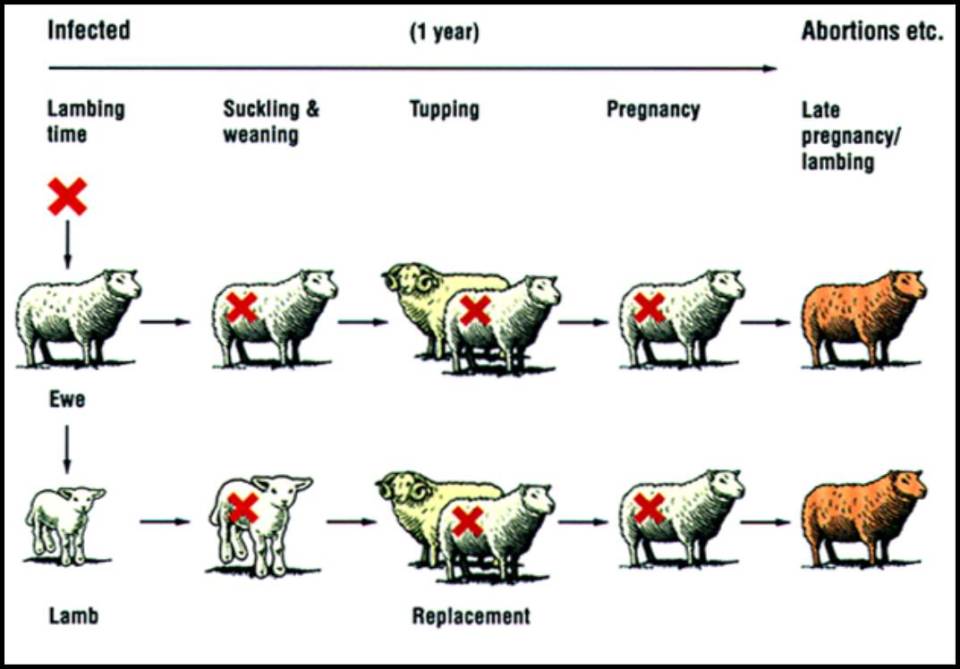
Clinical Signs
There are five main syndromes of abortion in sheep – Barren to tup, abortion, mummification, stillbirth (occasionally one live lamb born with a dead lamb) or the birth of weak lambs which fail to suckle properly and often succumb to disease in young life. It is however common to have many or all of these syndromes on a farm at the same time.
A clinical sign which is characteristic of enzootic abortion is the development of oedema (thickening) of the intercotyledonary area (between the buttons) of the placenta. This is caused by placentitis due to damage caused by multiplication of the Chlamydophila organism.
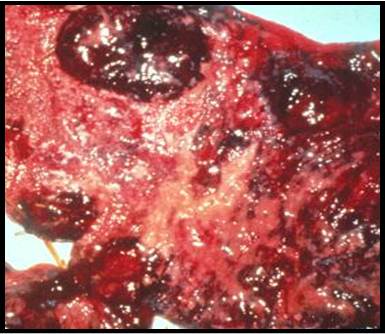
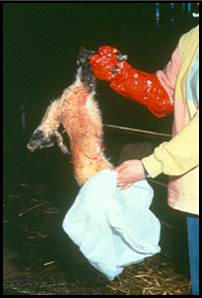
Diagnosis
Clinical signs of enzootic abortion of ewes (EAE) are indicative of infection but laboratory tests are required for a definitive diagnosis. Oedema (thickening) affecting the area between the cotyledons of the placenta described under clinical signs are highly characteristic for EAE. Laboratory tests are required for a specific diagnosis however.
Laboratory investigation
Antibody testing
Retrospective diagnosis of Chlamydophila infection can be made by measuring antibody levels in serum samples taken from ewes approximately three weeks after abortion has occurred. Timing of this sampling is important as if blood is taken at time of abortion, the result may be falsely negative.
Identification of the organism
Samples that can be submitted for histopathology (examination under a microscope). A smear of placenta using a special staining technique can identify the organisms as they are generally present in large quantities.
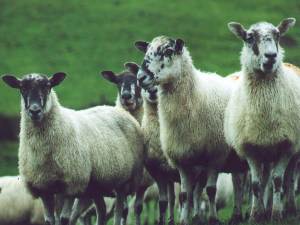
Control
Control of enzootic abortion of ewes is based on three equally important aspects:
- Retaining sheep in the flock after an abortion episode – Sheep that have aborted with EAE are immune, probably for life, though they may shed organisms in subsequent lambings. The old approach to disease was to cull these sheep. However, thinking on this has changes as economic evaluation has rendered culling of affected cases hard to justify. It is therefore now recommended to retain as many sheep in the flock that were exposed to disease as possible after the outbreak as these sheep will maintain a relatively high level of flock immunity, meaning that only replacements will have to be vaccinated. It must be understood that cases of latent infection will continue to arise for a few years after a vaccination programme has started. Therefore, vaccination will not result in an immediate prevention of abortion in every flock.
- Biosecurity – Buying in latently infected sheep is the principal initial source of infection. Maintaining a closed flock policy or purchasing sheep from known EAE free flocks will aid in control / prevention. Ensuring hygiene around lambing time with disposal of foetal membranes and isolation of affected cases will limit spread within the flock.
- Vaccination – A live vaccine is available for the control of EAE. The vaccine is administered ahead of tupping. For further information on the vaccine please click here. Further information is available from your local veterinary practitioner from whom advice must be sought.
- Medication – If EAE is diagnosed in a flock, the owner may intervene to prevent further losses by treating remaining pregnant sheep with oxytetracycline. A long acting formulation of this product can also be administered routinely on approximately day 110 of pregnancy and every 2 weeks for two to three occasions. However, due to current thoughts on prudent use of antibiotics, this approach is undesirable and could lead to the Chlamydophila becoming resistant to the active ingredient rendering this approach ineffective. For this strategy, further information is available from your local veterinary practitioner from whom advice must be sought.
